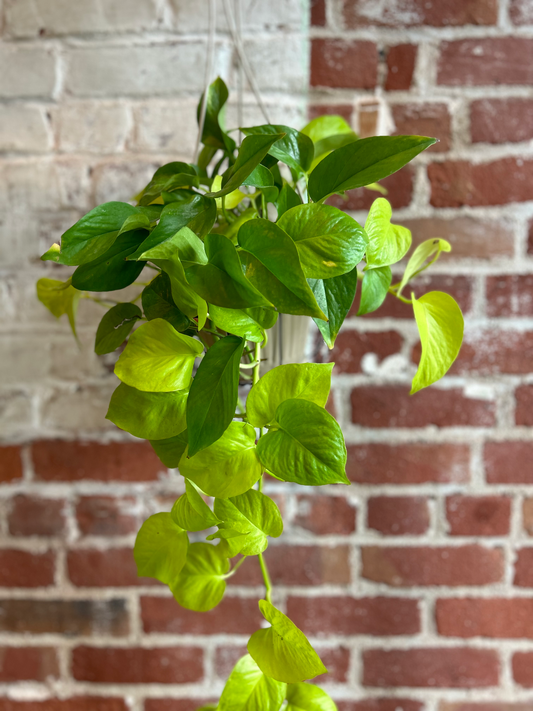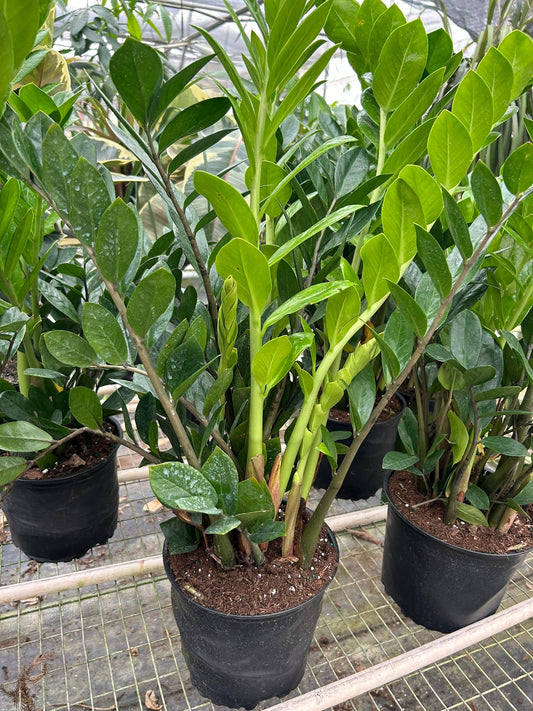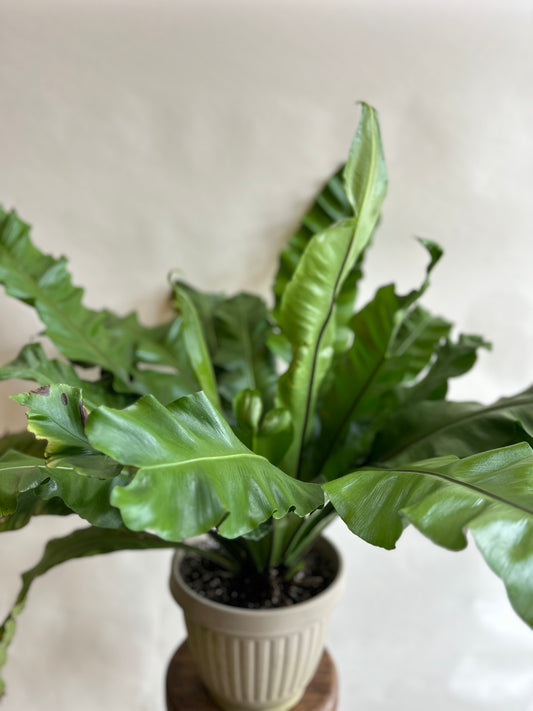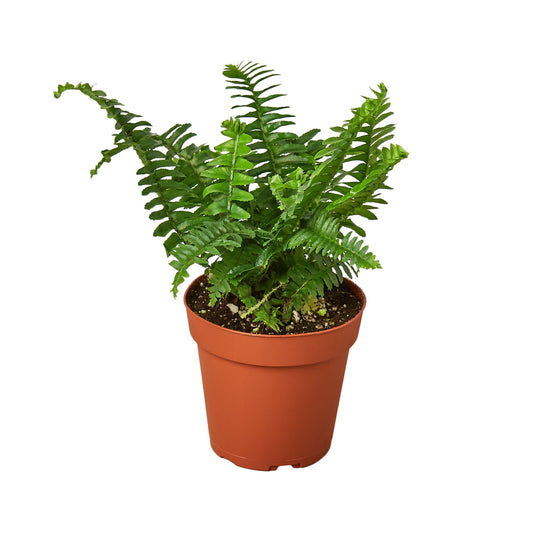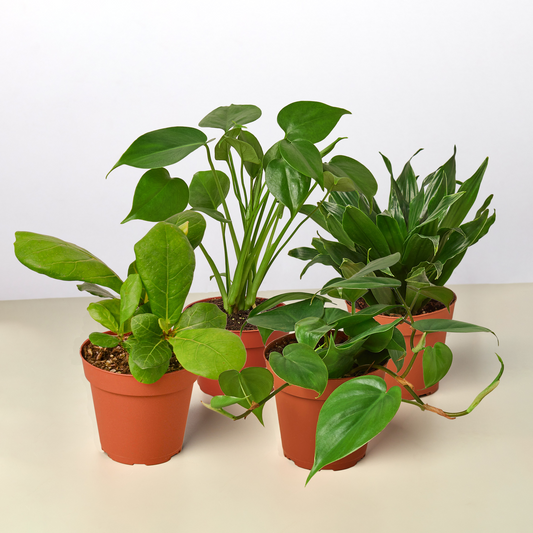Are Cast Iron Plants Toxic to Cats?
Cafe Planta Team
If you're a cat owner who loves plants, you're probably familiar with the constant juggling act of ensuring your home is safe for those curious, furry explorers. There's always that nagging question: Is this plant okay for my cat? Today, we're turning the spotlight on a popular houseplant known for its resilience and beauty—the cast iron plant.
We are going to look into whether cast iron plants are toxic to cats, and sprinkle in some helpful tips on how to integrate these hardy plants into your home without turning it into a feline hazard zone. So, settle in with your favorite cup of tea (or coffee), and let's unravel the mystery of the cast iron plant and your feline friends.
What Exactly Is a Cast Iron Plant?
The cast iron plant, or Aspidistra elatior, is a real gem among houseplants. Known for its ability to thrive in almost any condition, it's like that friend who always seems to have it together, no matter what life throws their way. Originating from the forest floors of Asia, this plant has earned its reputation as one of the toughest indoor plants around.
With its dark green, strappy leaves, the cast iron plant adds a touch of elegance to any room. It's not flashy, but it has a subtle charm that can complement any decor style. The reason for its name? Well, much like cast iron cookware, this plant is incredibly durable, resistant to neglect, and can withstand a variety of conditions—from low light to drought. It's the perfect choice for both newbie plant parents and those with less-than-ideal indoor climates.
Why It's a Favorite Among Plant Lovers
So, why do plant people adore the cast iron plant? Here are a few reasons:
- Low Maintenance: It's one of those plants that you can almost forget about, and it will still look great.
- Versatile: Whether you have a sun-drenched living room or a dimly lit study, the cast iron plant can adapt.
- Longevity: This plant can live for decades, making it a long-term companion.
- Purifies Air: Like many houseplants, it helps clean the air, making your home a healthier place.
But as much as we love our plants, our feline friends come first. So, let's get to the heart of the matter: Are cast iron plants safe for your cats?
Are Cast Iron Plants Toxic to Cats?
Here's the good news: Cast iron plants are non-toxic to cats. That's right, according to the ASPCA (American Society for the Prevention of Cruelty to Animals), these plants are safe for our feline companions. This means if your cat decides to take a nibble, you don't have to panic and rush to the vet.
However, this doesn't mean you should encourage your cat to make a salad out of your houseplants. While not toxic, ingesting any plant material can still cause some digestive upset in cats. You might notice vomiting or diarrhea if they munch on too much greenery.
Keeping Plants and Cats Happy Together
Even though cast iron plants aren't toxic, it's still a good idea to implement some strategies to keep both your cats and your plants thriving. Here are a few tips:
- Distraction: Provide your cat with their own plants to chew on, like cat grass or catnip. This can help divert their attention from your houseplants.
- Placement: Consider placing your cast iron plant in areas that are less accessible to your cat. High shelves or hanging planters can be a great solution.
- Training: Use positive reinforcement to train your cat to stay away from certain areas. A gentle spray of water or a firm "no" can work wonders over time.
- Repellents: Some cats dislike the smell of citrus. Placing orange or lemon peels around your plants can deter them.
With these strategies, you can create a harmonious environment where both your cats and plants can coexist peacefully.
Tips for Caring for a Cast Iron Plant
Now that you're reassured about your cat's safety, let's make sure your cast iron plant is living its best life. These plants might be low maintenance, but a little care goes a long way in keeping them happy and healthy.
Light Requirements
Cast iron plants are adaptable when it comes to light. They prefer low to moderate light, making them perfect for those less sunny spots in your home. However, they can tolerate brighter conditions if indirect. Direct sunlight can scorch their leaves, so keep them out of those intense rays.
Watering Needs
When it comes to watering, less is more with these plants. Allow the top inch of soil to dry out between waterings. Overwatering can lead to root rot, which is a common issue for indoor plants. If you're unsure, it's better to underwater than overwater.
Soil and Potting
A well-draining potting mix is ideal for cast iron plants. You can use a standard houseplant mix, just make sure the pot has drainage holes to prevent water from sitting at the bottom.
Temperature and Humidity
These plants thrive in temperatures between 60-75°F (15-24°C). They're fairly tolerant of varying humidity levels, but if you find your home is particularly dry, a pebble tray or occasional misting can help.
By following these guidelines, you'll ensure your cast iron plant remains a lush and vibrant part of your home for years to come.
Integrating Cast Iron Plants into Your Home Decor
Aside from being cat-friendly, cast iron plants are also incredibly versatile when it comes to home decor. Their simple yet elegant appearance can complement a wide range of interior styles, from modern and minimalist to rustic and traditional.
Decorating with Cast Iron Plants
- Statement Pieces: Use a large cast iron plant as a statement piece in your living room or hallway. Their tall, arching leaves can add a touch of sophistication to any space.
- Grouped Arrangements: Pair them with other non-toxic plants like spider plants or parlor palms for an interesting and diverse look.
- Accent Corners: Place smaller cast iron plants on shelves or side tables to fill in empty corners and add depth to your decor.
- Complimentary Colors: The deep green leaves of the cast iron plant can beautifully contrast with light-colored walls and furnishings, creating a striking visual effect.
With a little creativity, you can use cast iron plants to enhance your home while keeping your feline friends safe and sound.
Common Problems and Solutions
While cast iron plants are tough, they're not entirely bulletproof. Like any plant, they can face a few challenges. Here are some common issues you might encounter and how to tackle them:
Yellowing Leaves
If you notice yellowing leaves, it could be a sign of overwatering. Check your watering routine and ensure the soil has a chance to dry out between waterings. Yellow leaves can also indicate poor lighting conditions. Make sure your plant isn't in direct sunlight or too dark a spot.
Pest Issues
Though not common, cast iron plants can occasionally attract pests like spider mites or scale. If you spot these uninvited guests, a gentle wash with soapy water or a natural insecticidal spray can help clear them out.
Brown Leaf Tips
Brown tips on the leaves might indicate low humidity or inconsistent watering. Try adjusting your watering schedule and consider increasing humidity around the plant with a humidity tray or by grouping plants together.
By keeping an eye out for these issues and addressing them promptly, your cast iron plant will continue to thrive beautifully.
Fostering a Cat-Friendly Home with Plants
Creating a home that's both cat-friendly and filled with plants might seem like a challenge, but it's definitely doable with a bit of planning and creativity. Here are some ways to make your space welcoming for both your cats and your greenery:
Choose Non-Toxic Plants
Opt for plants like cast iron plants, spider plants, and Boston ferns, which are all non-toxic to cats. This way, you can relax knowing your plants won't pose a risk to your furry friends.
Cat-Safe Planting Areas
Designate specific areas in your home where you place your plants. This can help manage your cat's curiosity and keep them away from the plants. Use shelves, plant stands, or even hanging planters to elevate your greenery.
Enrichment for Cats
- Cat Grass: Plant some cat grass in pots around the house. It's a safe and healthy option for your cat to nibble on.
- Cat Trees: Provide vertical spaces like cat trees or shelves where your cat can climb, play, and perch. This keeps them entertained and less likely to bother your plants.
- Interactive Toys: Keep your cat occupied with interactive toys to distract them from your plants.
With a little preparation, you can enjoy the best of both worlds—a lush home filled with plants and happy, healthy cats.
Final Thoughts
We've covered quite a bit about cast iron plants and their relationship with our feline friends. To sum it up, cast iron plants are non-toxic to cats, making them a fantastic choice for plant-loving cat owners. With a few simple strategies, you can enjoy a home that's filled with beautiful plants and is safe for your pets.
At Cafe Planta, we offer a wide selection of houseplants, including the resilient cast iron plant. Whether you're looking for plants, plant care accessories, or just want to chat about your plant questions, we're here to help. Feel free to email us or send a message on Instagram. Let's connect and grow your green space together.


